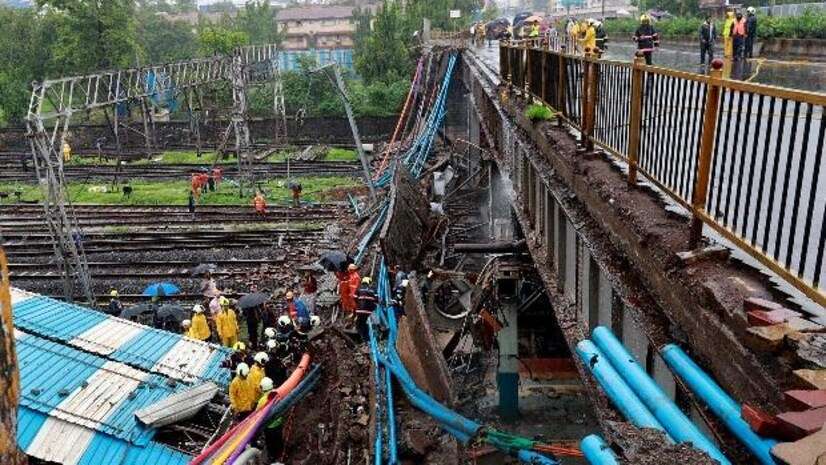Indian Contractors Bidding for Disaster. How Flawed Infrastructure is Killing India?
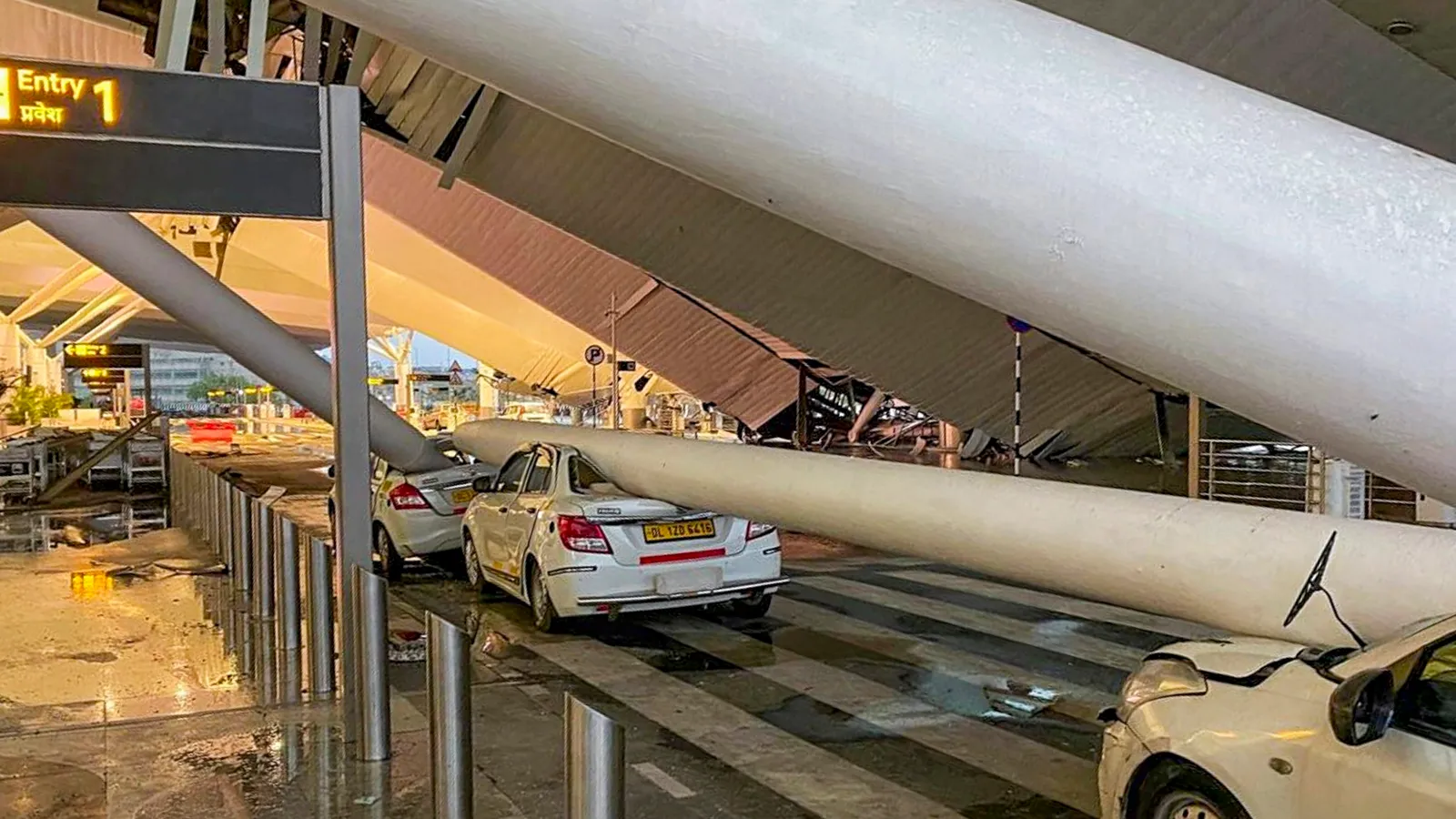
Fatal Infrastructure Failures; India’s Shameful Legacy of Negligence
On 28th June, 2024, 45-year-old Ramesh Kumar went to Delhi Airport to drop off his customer. He was working overtime because he wanted to earn more money for his elder daughter’s wedding. As soon as he dropped his customer, the roof of Delhi Airport’s Terminal 1 fell on his car and he died.
On 27th June, 2024, the roof of Jabalpur’s recently inaugurated airport collapsed. On 1st July, two people were killed in Mathura when a 250,000 litre water tank collapsed. Ayodhya is in such a state that even few news channels are reporting that only Lord Ram can save it.
“Can only Lord Ram save Ayodhya now?”
The gutters of Gurgaon have become fountains. But all the records have been broken in Bihar, where 13 bridges have collapsed in 3 weeks. Life in India is so cheap that as soon as people step out of the house, either a hoarding will fall on them, or the roof of the airport, or the bridge will slip off their feet.
According to an official data, between 2018 and 2022, 8,500 people have died because of the collapse of public infrastructure. So who’s responsible for this?
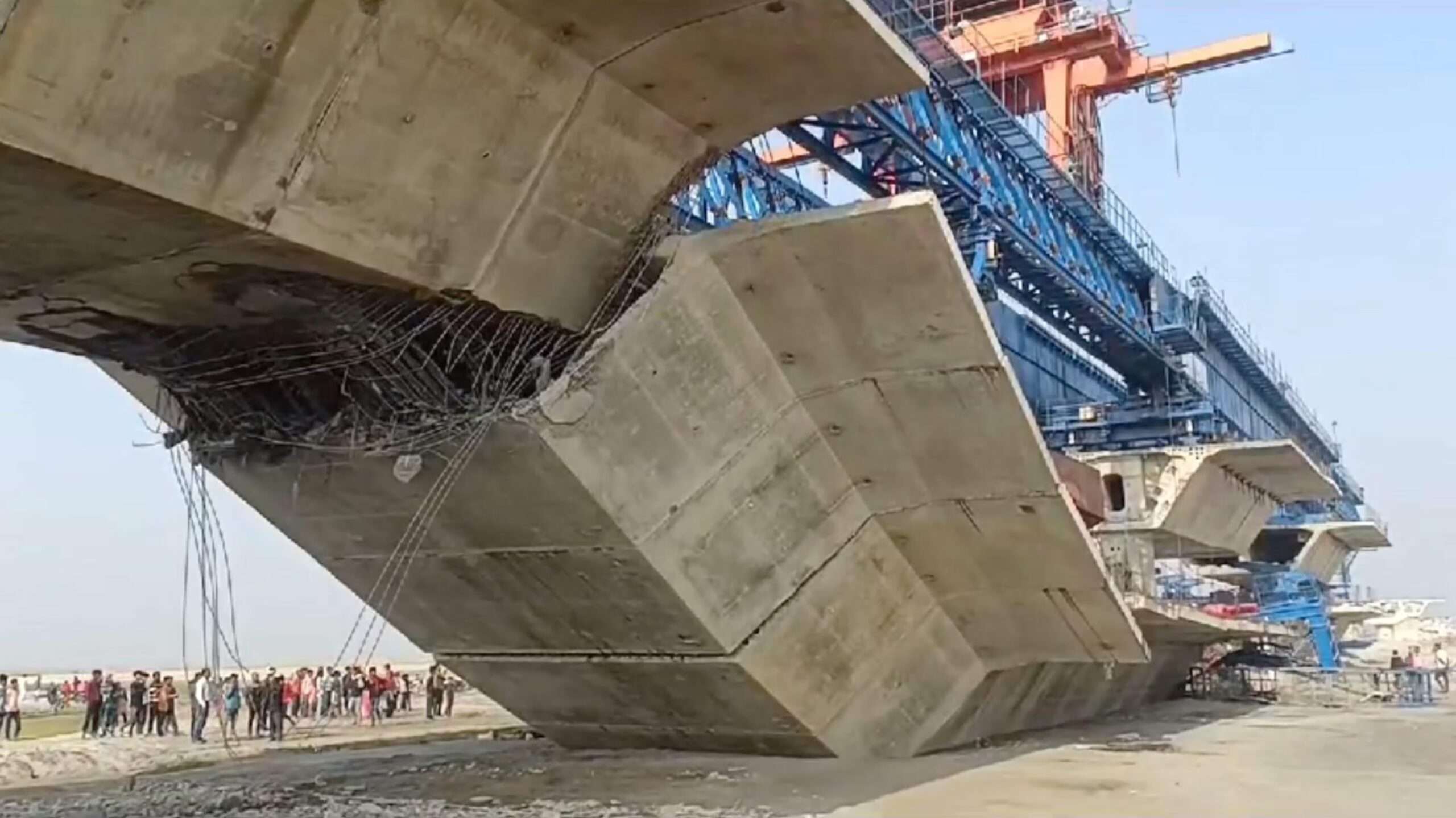
Why is India’s infrastructure so bad?
To understand why the infrastructure in our country is so bad, one needs to understand the process of an infrastructure project.
First, a contract is given to a company. Then the company designs and executes the project. After that, the infrastructure has to be maintained. For this, safety audits needs to be conducted. But in India, the problem starts at the contract stage. The main reason for this is that the government uses L1 contracts.
What are L1 contracts?
Let’s take an example
On March 31, 2016, at around 12.30 pm, there was a huge crowd at Vivekananda Road near the Girish Park metro station in Kolkata. Some people were going to work, while others were going for lunch break. At this time, an under-construction part of the Vivekanand flyover fell on people. 26 people were crushed. Why?
The company that built the flyover, IVRCL, its operations director, AGK Murthy, said that it was an act of God. But it wasn’t an act of God. It happened because of IVRCL. Because 7 years ago, they submitted the lowest bid to win a contract. In its report, IIT Kharagpur also said that the company tried to save costs at every level. Because of this, the flyover collapsed.
But this isn’t a single incident.
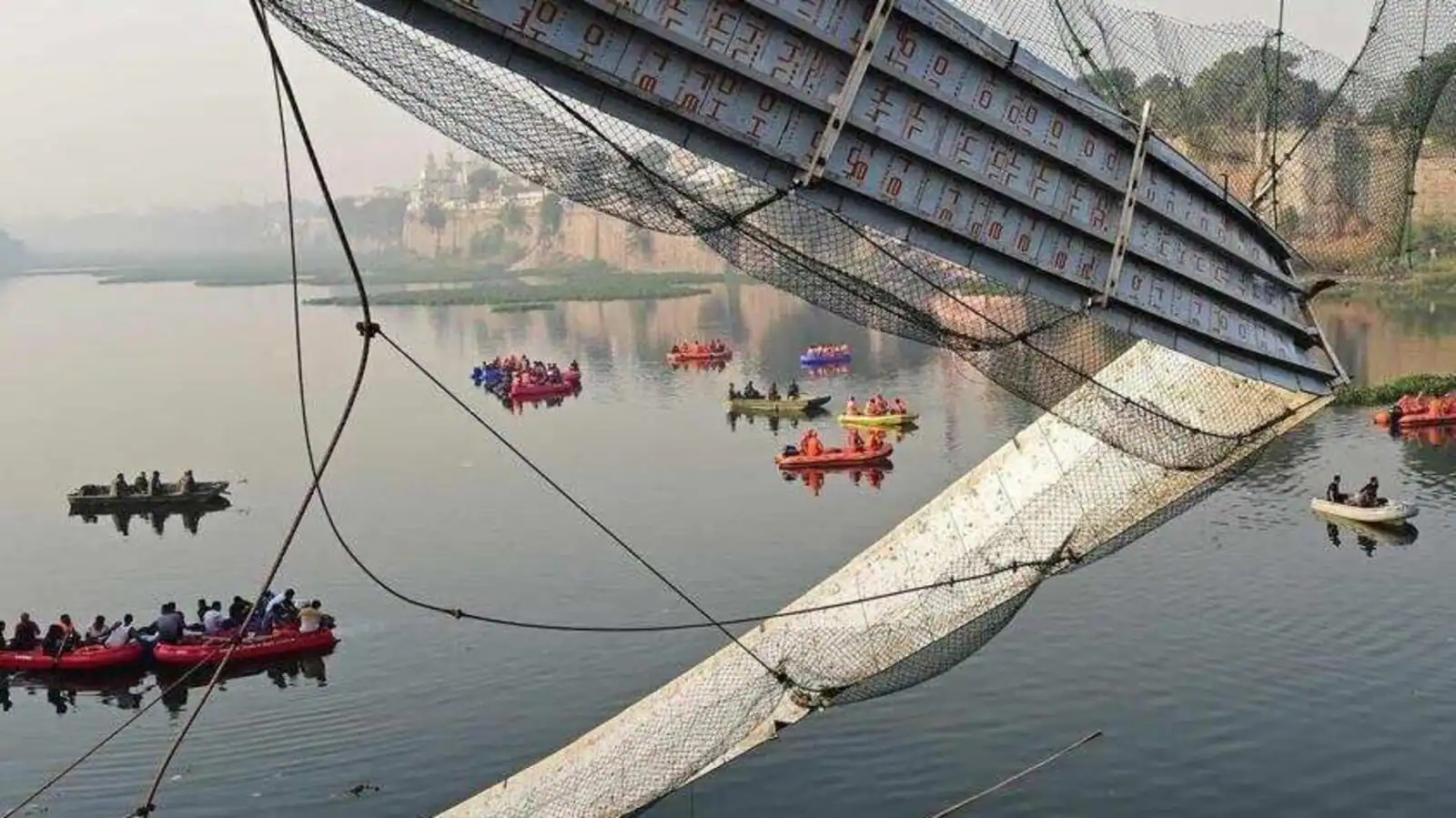
On October 30, 2022, the Morbi Bridge in Gujarat collapsed because of which 140 people lost their lives.
“In Gujarat’s Morbi, on Sunday evening, a cable bridge built on the Machchu River broke down.” During this incident, many people were on the bridge and they fell on the river. The Gujarat government gave a contract to a local company, Oreva, to repair the 100-year-old suspension bridge. But Oreva’s main business was to make clocks and lighting.
“The renovation contract was given to a company that makes clocks, calculators, not constructions, and certainly not bridges”
There was no evidence that this company had experience in repairing bridges. And this is a systemic problem in India. Because the government uses the L1 method to issue contracts. The L1 method is the lowest-cost method. That is, the contract is issued to the company that can work at the lowest cost. It doesn’t matter if the contractor has experience or quality.
A report by the Indian government showed that many projects fail because of this method. In 2002, the Central Vigilance Commission, a government body, reported that many contracts are issued to companies that don’t have any qualifications. And this is because of the L1 method.
Many companies make a fake budget to win a contract. They deliberately show a low cost for everything. If they show a low cost, they’ll win the contract. And this is what happens. But the government is trying to change this. On October 29, 2021, the Finance Ministry issued new guidelines on contracts. They said that the quality of the contractor will be assessed before issuing the contract. This system is called quality-cum-cost based selection.
But in its press release, the ministry also said that this system won’t replace the traditional L1 system. In fact, it will be used in a few cases. In 2021, the government said that this new system will only be used for contracts worth less than Rs. 10 crores. Two years later, this was changed. But the government still didn’t say that this new system will be used in all projects. So even today, L1 systems are used to develop infrastructure.
Even in this new system, not every contractor criterion is evaluated. But this isn’t logical.
Does a government minister go to a contractor who is the cheapest to build a house? Or does he go to a contractor who has a good quality and budget?
If the ministers use this system for their homes, shouldn’t they use the same logic for the infrastructure of the country?
The infrastructure that millions of people use. But the government isn’t doing this. To save money in the short term, it’s compromising the lives of the people in the long term.
The solution is very simple.
Many researchers have written about this solution. It’s a multi-criteria contractor selection framework. Under this, multiple criteria of the contractor will be evaluated. Be it bid price, financial capabilities, technical capabilities, experience, performance, or health safety. India isn’t the first country to implement this system. This system is used in the US and Europe. But the problem is that it’s difficult to take bribes in this system.
Even after securing the contract, companies make a second mistake. They don’t design the infrastructure properly.
For example, look at this.
In June 2022, PM Modi inaugurated the Pragati Maidan Corridor project. It cost Rs.777 crore. The PM said that a magnificent tunnel was built in such a short time. “In such a short time, it wasn’t easy to build this integrated transit corridor.” But what happened after two years? The tunnel became useless.
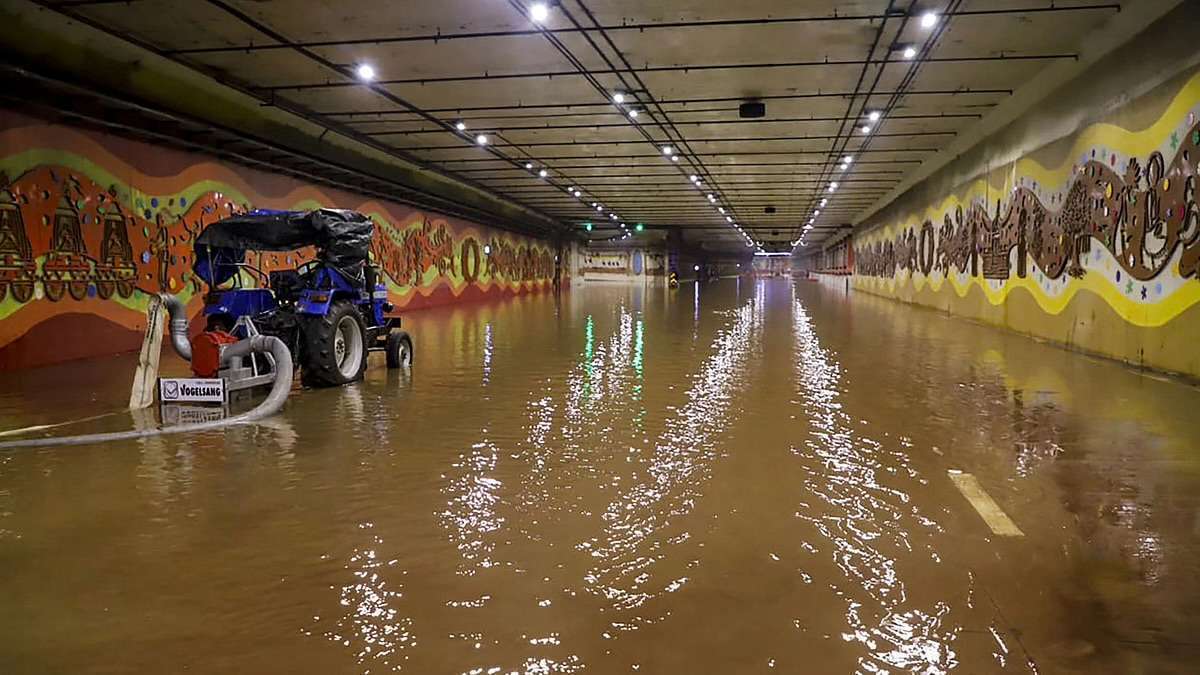
“Now the condition of the Pragati Maidan is not disastrous. In the monsoon season of last year, this project was non-operational for the general public because of water blockages. So a project was built with a cost of Rs.800 crore. And in two years, it became useless. It was said that many advanced facilities are being used in this tunnel, like automated drainage.
But the Public Works Department said that this project had technical and design flaws. Many flaws were revealed. Cracks, drainage, and water seepage. Archit Pratap Singh, an urban planning expert, said that to build a good underground tunnel, you need to look at the soil and rock conditions. But the Pragati Maidan Tunnel project didn’t do this. That’s why it had poor waterproofing.
The water seepage problem was seen in Bihar as well. The bridges here are falling apart like a house of cards. “Only 3 weeks ago, the monsoon reached Bihar.” “But more than the water, the bridges are falling down.” The bridge across Janata Bazaar has fallen. Every day, news of a bridge collapse appears. In just 13 days, 13 bridges have fallen.
In Bhagalpur, an under-construction bridge built on the Ganga river, fell not once, but twice. How much money was spent? Rs. 1,700 crore.
Construction engineer Soni Yadav said that these projects didn’t conduct proper soil testing. Why? Because the contractor wanted to save money. And corruption is rampant in Bihar. Prashant Kishore says that if you spend Rs. 100 to build a road, then Rs. 40 are stolen. And the road is built for Rs. 60. But the budget is not what should be blamed.
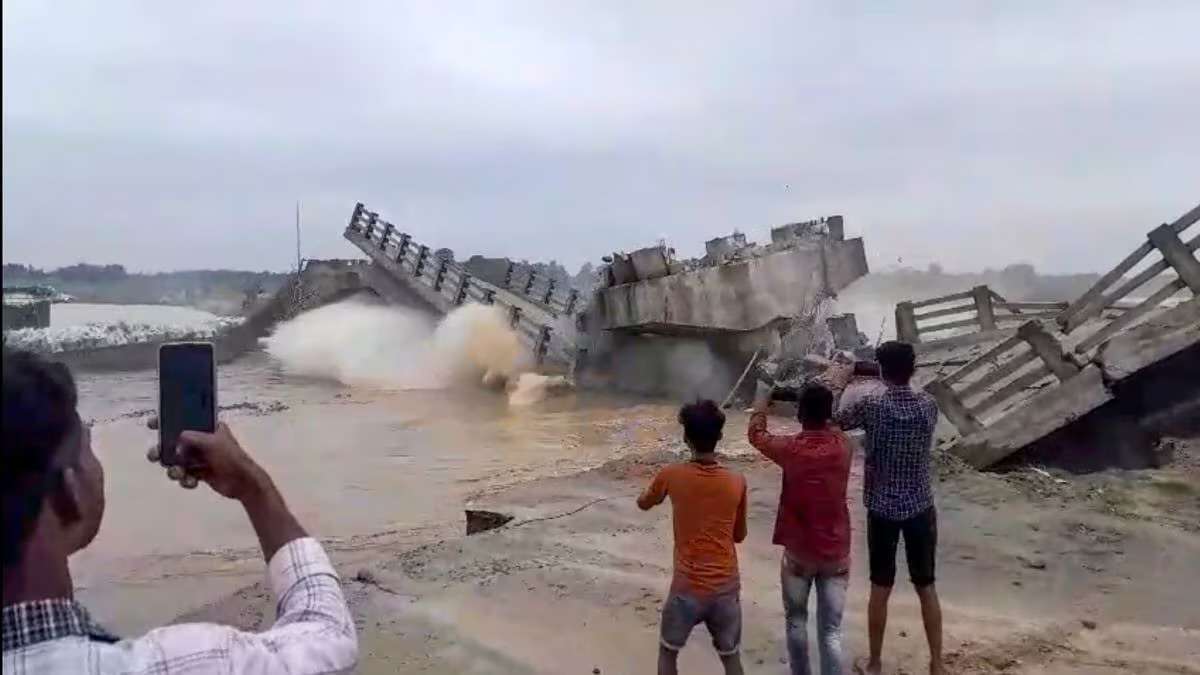
Have a look at India’s space organisation ISRO.
Its budget is much lower than other space organisations. Still they have good accomplishments. The reason behind this is the technical quality of their staff, which is still missing in the Indian construction industry.
Soni Yadav says that local contractors don’t follow the blueprint and instructions properly. Whereas in Japan, if a building is built that is more than 5 storeys long, you have to procure structural and aerodynamic certification from the government agency. Wind tunnels and simulations are used to test whether the new building will be able to stand there or not. For such technical requirements, India needs good engineers.
Even in the midst of unemployment, large construction companies like Larsen and Toubro have a shortage of engineers and techies. L&T says that the problem is that skilled engineers go to the Middle East because they get good pay and have a good work environment. Only those engineers are left who don’t have the skills.
There is a need to fill the skill gap or the contractors will keep making mistakes. And even when they do, they don’t get caught due to poor auditing.
In 2019, Mumbai’s footover bridge collapsed, killing 6 people. 6 months before the incident, Mumbai’s municipal corporation BMC got an audit report saying the bridge was fit to use, but it needed minor repairs. This audit was conducted when 3 years ago, another bridge collapsed on the Mumbai-Goa highway. BMC gave a contract to a company to audit 314 subways, skywalks, and bridges in Mumbai.
In the audit, it was said that 14 out of 314 should be demolished, 47 needed major repairs, 176 needed minor repairs, and 77 were fine. And this CSG bridge was one of those 176 bridges that were deemed fit to use with minor repairs. If only minor repairs were needed, would the bridge have collapsed like this in 6 months?
But after this incident, another BMC report said that the audit wasn’t conducted properly. Then Mumbai police arrested Auditor Neeraj Kumar Desai, whose company declared the bridge safe, despite the corrosion in the structure. Two engineers from the BMC’s Bridges Department were also arrested for not performing their duties properly. But this is just one example of how lightly the government officials take public safety.
The same thing happened in Delhi.
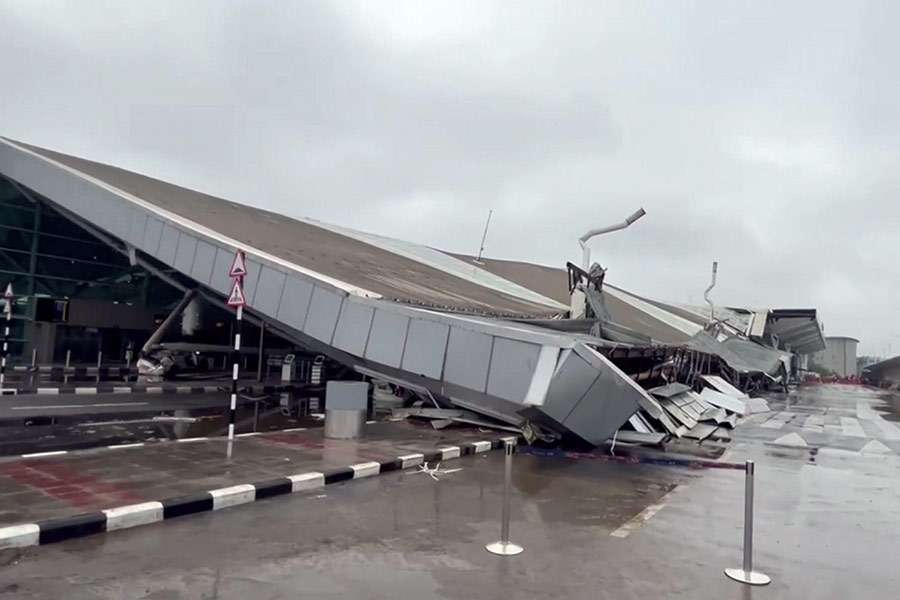
After the Delhi airport roof collapsed when the Aviation Minister was told that the collapsed pillar had corrosion, he said that he will check whether the safety audit was conducted properly or not.
The problem is that there’s no organisation in our country that’s responsible for safety audits. So whenever a roof or flyover falls, people don’t know who to blame. If you protest, the government either fires or arrests some people. But there’s no structural change in our government.
It is seen in the case of Gujarat.
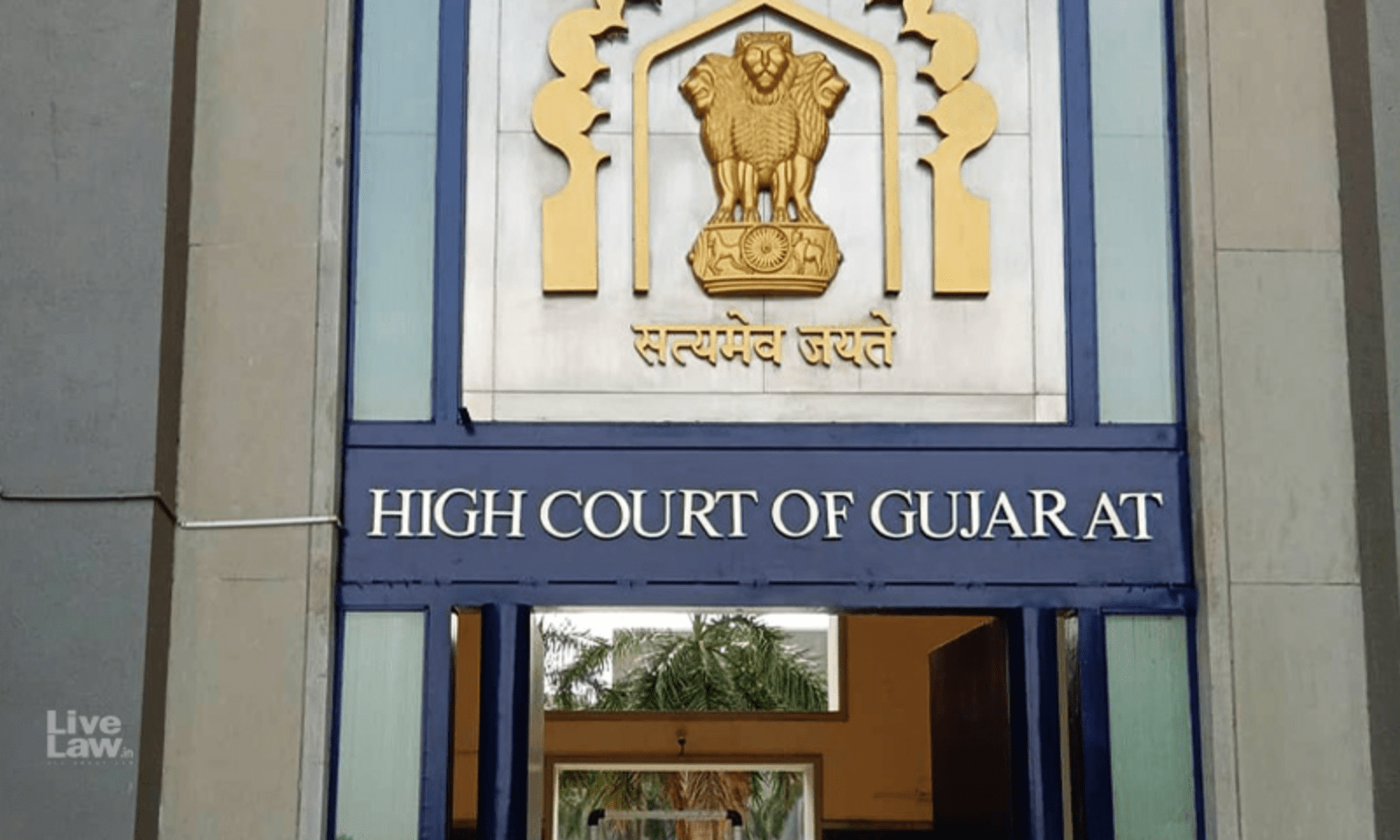
When the Morbi Bridge collapsed, the Municipal Authority found out that the bridge was opened without a clearance certificate. Nine people were arrested to appease the public, including a ticketing clerk and three security guards, because they didn’t regulate the crowd properly.
But no one in the government took responsibility.
In fact, a few weeks ago, the Gujarat High Court asked the Gujarat government they had to submit an action-taken report after forming the Special Investigation Team but that didn’t happen.
In fact, the state High Court is asking the government who’s responsible for this. If the state High Court doesn’t know, who are we to find out?
It is also seen what is happening with the money in the Pragati Maidan Tunnel in Delhi. After the tunnel became useless, the Public Work Department filed a fine on Larsen & Toubro Company saying that the project had serious technical and design errors.
After that, the L&T put a counter-claim on the government of Rs 500 crores. So now they’ll fight over who’s at fault, while you’ll lose your life. The accountability problem in Delhi is even more serious. After a day’s rain, Delhi was completely shut down. It’s true that the rain was heavy, but the government didn’t even prepare properly.
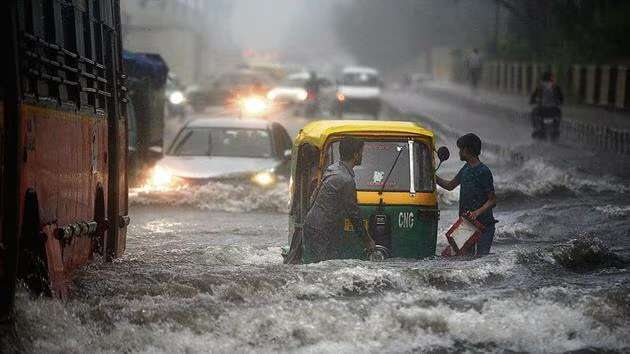
The Delhi High Court, in fact, predicted this situation and said that the Delhi government should remove the waste from the 22 open tunnels to clear the blockage. But the Delhi government said in response that they only control 3 out of 22 tunnels. 19 are under other departments. And this is true. This is the main problem in Delhi. People don’t know who’s controlling what. There are 4,000 km of stormwater drains in Delhi, which are controlled by 8 different authorities. 8!
Now who will to blame?
Who will to shout at?
- This is the state of roads and bridges.
- The Indian Railways manages the railway bridge.
- The National Highway Authority manages the national highway bridges.
- The Border Road Organization manages the border areas.
- The State Highway Authority manages the PWDs.
So people don’t know which department is working on what. And if a gutter overflows in Delhi, how will everyone know which authority to call out of the 8?
That’s why the High Court said that the government should fix this responsibility on one authority. Because the lives of Indians are not as cheap as the governments think.

